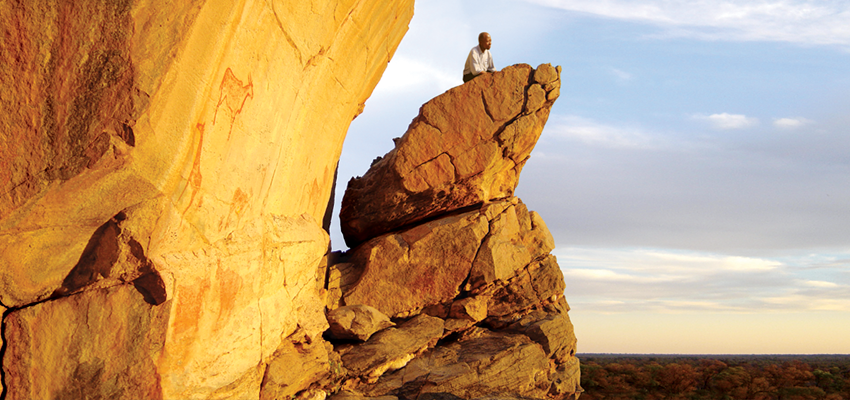Rising abruptly, and dramatically, from the Kalahari scrub bush – the rock face turning a copper colour in the dying sun – the magnetic power of Tsodilo Hills both captivates and mystifies. There is an undeniable spiritualism about the Hills that immediately strikes the visitor.
Indeed for the people who live at the Hills – the San, the original inhabitants, and the Hambukushu who have periodically occupied the hills for the past 200 years – Tsodilo is a sacred, mystical place where ancestral spirits dwell. In earlier times, their ancestors performed religious rituals to ask for assistance, and for rain. They also put paintings on the rock face; and their meaning and symbolism remain a mystery even to today.
Exploring the three main Hills – Male, Female, and child – is a journey into antiquity. Archaeological research – ongoing for the past 30 years – estimates that Tsodilo has been inhabited for the past 100 000 years, making this one of the world’s oldest historical sites. Pottery, iron, glass beads, shell beads, carved bone and stone tools date back 90 000 years.
The Early iron Age Site at Tsodilo, called Divuyu, dates between 700- 900AD, and reveals that Bantu people have been living at the hills for over 1000 years, probably having come from central Africa. They were cattle farmers, settled on the plateau, and traded copper jewellery from the Congo, seashells from the Atlantic, and glass beads from Asia, probably in exchange for specularite and furs. There was a great deal of interaction between different groups, and trade networks were extensive.
Excavations also reveal over 20 mines that extracted specularite – a glittery iron-oxide derivative that was used in early times as a cosmetic.
Rock paintings are nearly everywhere – representing thousands of years of human inhabitation, and are amongst the region’s finest, and most important. There are approximately 4 000 in all, comprising red finger paintings and geometrics. It is almost certain that most paintings were done by the San, and some were painted by the pastoral Khoe who later settled in the area. The red paintings were done mainly in the first millennium AD.







